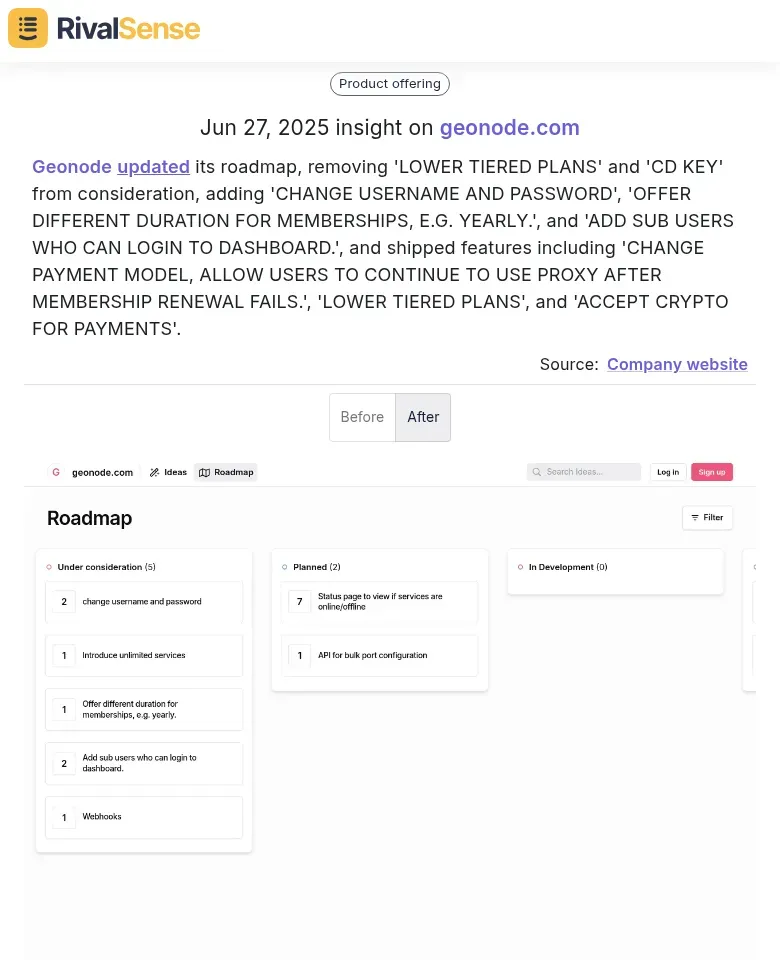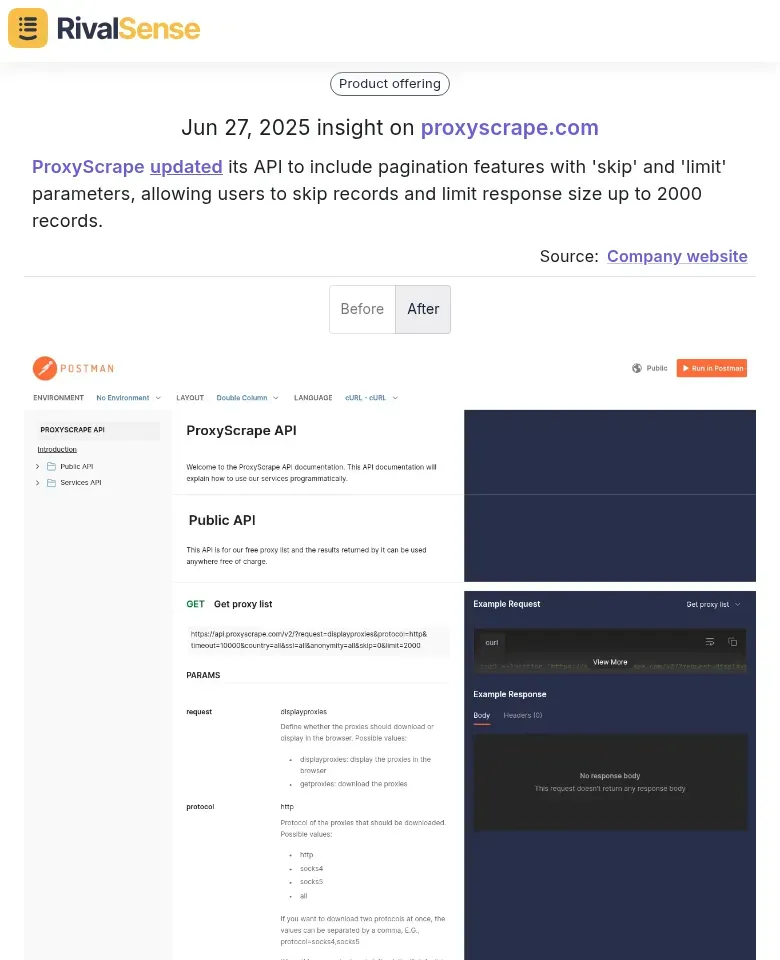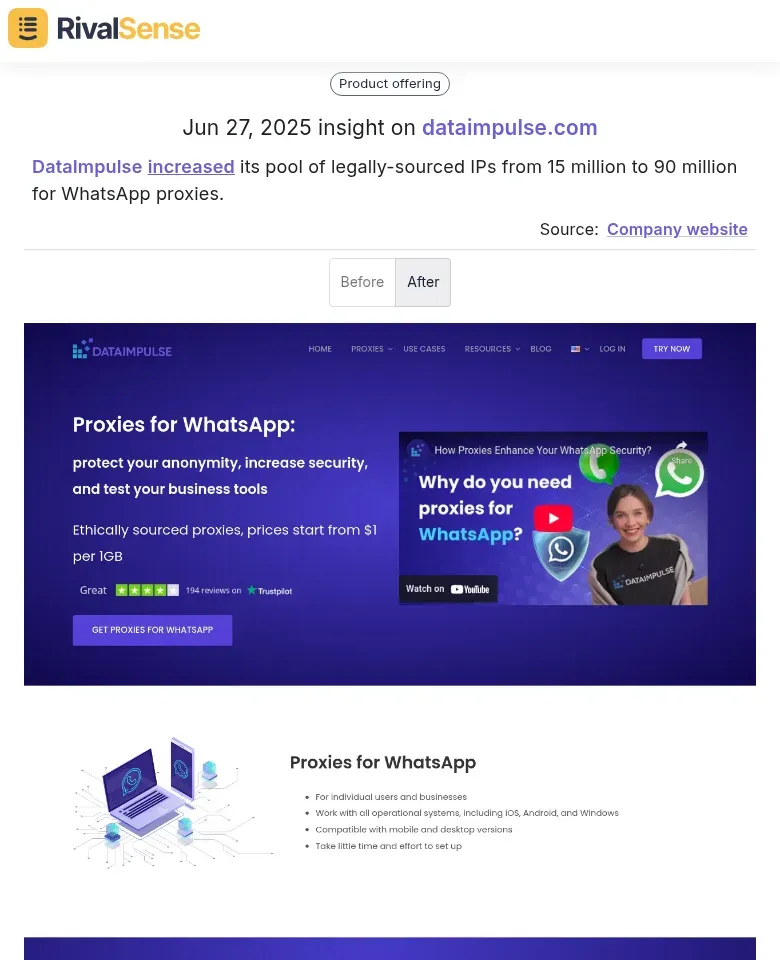Unlock Strategic Wins: How Tracking Competitor Website Changes Fuels Business Growth
In today's hyper-competitive B2B landscape, understanding competitors' moves is no longer optional—it's strategic survival. Website changes serve as real-time indicators of shifting priorities and market positioning. When competitors modify features, pricing, or messaging, they reveal unspoken insights about market demands and vulnerabilities. For instance, sudden pricing adjustments might signal new customer acquisition strategies, while feature updates often reflect evolving user expectations.
Actionable starting points:
1️⃣ Set automated alerts for competitor website changes
2️⃣ Conduct weekly audits of key pages (pricing, features, blog)
3️⃣ Document historical changes to identify patterns
Analyzing Product Roadmap Adjustments
Product roadmap changes are treasure maps revealing competitors' strategic direction and market focus. Tracking additions or removals of planned features helps predict where the market is heading. When a competitor deprioritizes certain capabilities while accelerating others, it signals validated learning from customer interactions that you can leverage.
Consider how Geonode's roadmap adjustments provide strategic intelligence:

Geonode removed 'Lower Tiered Plans' while adding 'Sub Users' functionality and crypto payments—indicating a strategic pivot toward enterprise clients and payment flexibility. This insight helps anticipate market shifts in proxy service demands.
Roadmap monitoring checklist:
- [ ] Track monthly feature additions/removals
- [ ] Cross-reference changes with customer feedback channels
- [ ] Benchmark development velocity against your team
- [ ] Identify gaps in your own roadmap
Decoding Technical and API Updates
Technical enhancements reveal how competitors are investing in scalability and developer experience. API changes specifically indicate priorities around integration capabilities and ecosystem expansion. Monitoring these updates helps anticipate infrastructure trends that could become industry standards.
Notice how ProxyScrape's API update offers actionable intelligence:

By adding pagination parameters allowing up to 2000 records, ProxyScrape signals focus on handling larger datasets—valuable intelligence when planning your own scalability roadmap. Such updates often precede enterprise-tier offerings.
Practical evaluation steps:
- Subscribe to competitors' API changelogs
- Test performance under varying load conditions
- Compare update frequency against user experience improvements
Understanding Infrastructure and Resource Expansion
Infrastructure scaling demonstrates tangible commitment to market leadership. When competitors significantly increase technical resources like IP pools or server capacity, it often precedes geographic expansion or service tier upgrades. These investments signal confidence in market demand you might otherwise miss.
DataImpulse's infrastructure move exemplifies strategic signaling:

Scaling WhatsApp proxies from 15M to 90M IPs indicates both resource commitment and anticipation of regional growth—intelligence crucial for timing your own market expansions or partnership plays.
Monitoring tactics:
- Track job postings for infrastructure roles
- Use performance tools to detect latency improvements
- Analyze support documentation for scaling clues
Leveraging Insights for Strategic Decision-Making
Raw competitor intelligence only creates value when transformed into action. Systematic analysis of website changes should directly influence product planning and go-to-market strategies. The most successful CEOs treat competitor movements as market research supplements rather than reactive triggers.
Strategic implementation framework:
| Insight Type | Strategic Action | Outcome |
|---|---|---|
| Feature Removal | Validate market demand through customer interviews | Avoid investing in low-value capabilities |
| Pricing Changes | Conduct win/loss analysis on recent deals | Adjust positioning before renewals |
| Infrastructure Growth | Audit your scalability readiness | Prevent churn from performance gaps |
Best practices:
🔁 Monthly cross-functional review sessions
📊 Quantify impact of strategy adjustments
🎯 Focus on 2-3 high-signal competitors initially
Conclusion and Next Steps
Continuous competitor website monitoring transforms reactive businesses into market leaders. By systematically tracking roadmap shifts, technical upgrades, and infrastructure investments, you gain unprecedented visibility into market trajectories. Remember—patterns matter more than individual changes; consistent tracking reveals strategic intentions.
Immediate actions:
- [ ] Identify top 3 competitors for weekly tracking
- [ ] Document current baselines across pricing/features/resources
- [ ] Schedule monthly strategy alignment sessions
💡 Ready to transform competitor intelligence into growth? Automate your tracking with RivalSense—get your first competitor report today. Our platform monitors product launches, pricing changes, and infrastructure expansions across websites, registries, and social media, delivering actionable insights in weekly reports.
📚 Read more
👉 Harvey vs. Competitors: Actionable Strategies for Dominating AI Legal Tools
👉 Regulatory Rivals: Turning Compliance into Competitive Advantage with NPS Insights
👉 CloudSEK's Latest Moves: Compliance, Events, and New Research
👉 How to Analyze Competitor SEO Strategies: A Step-by-Step Guide
👉 Mastering Competitor Roadmaps: Advanced Tactics for Baby Goods Wholesalers
